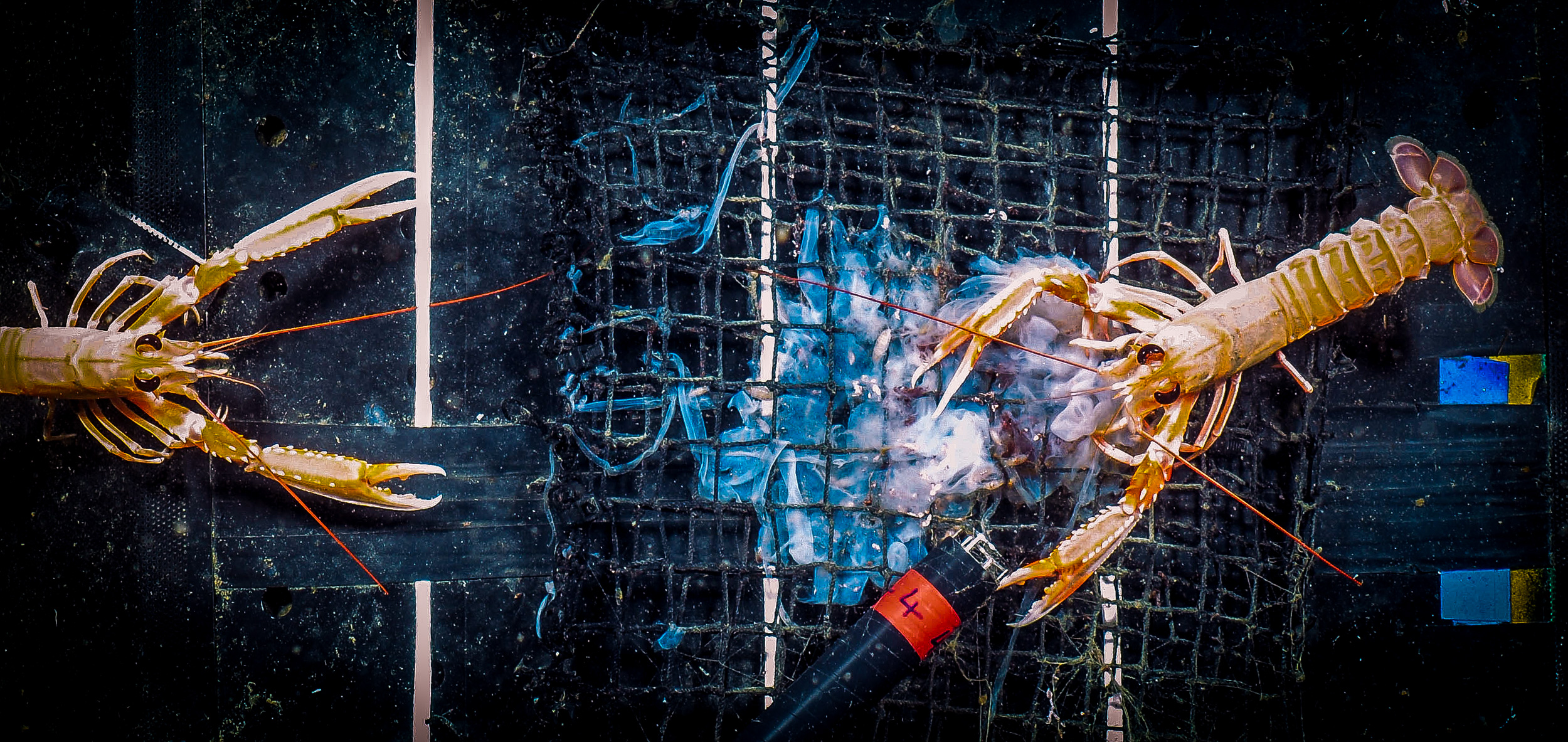Jellyfish For Dinner?
SCIENCE / BLUE BIOECONOMY
Writer: Helge M. Markusson // Fram Centre
Photographs: Daniel Jones, Kathy Dunlop, Kristjan Fridriksson
December 2018
Many, probably most people think of jellyfish as a pest and a nuisance; a species that does not have any value in the food chain. Jellyfish have historically been regarded as a dead-end in the marine food chain, which means that the energy or nutrients ingested by jellyfish are not transferred to other marine animals.
Now, a very different story is emerging from research, showing that jellyfish is indeed a significant contribution to the diet of other marine animals. Amongst them also those that are important to commercial fishing and human nutrition. Helge M. Markusson writes about some interesting findings from the JellyFarm project, which is funded by the Norwegian Research Council and the Fram Centre in Tromsø, through a flagship program called Effects of climate change on fjords and coastal ecosystems in the north.
Researcher Kathy Dunlopp from Akvaplan-niva preparing the bait, jellyfish, on a plate to be lowered into the sea. JONAA©Daniel Jones, National Oceanography Centre, Southampton.
Researchers lowering an underwater camera with plates filled with jellyfish.
JONAA©Daniel Jones, National Oceanography Centre, Southampton.
Using an underwater camera researchers have proven that jellyfish is an important food source for the Norway lobster. Photo: Daniel Jones, National Oceanography Centre, Southampton.
Researcher Daniel Jones displaying a carrion-eater caught at a depth of 250 meters in Sognefjord, June 2016. JONAA©Kathy Dunlop, Akvaplan-niva.
Excellent food source for the Norway lobster
The jellyfish population inside Norwegian fjords has increased. This is due to a combination of depth colonisation, possibly overfishing, nutrient supply, human development along the coast and ocean warming. This has brought about negative economic consequences such as fish death in aquaculture farms and a great deal of work when they get stuck in nets and other fishing gear.
A recently published study shows that jellyfish can be an excellent source of food for the Nephrops norvegicus in Norwegian fjords. Researchers from the Akvaplan-niva at the Fram Centre in Tromsø, the National Oceanography Center in Southampton and Heriot-Watt University in Edinburgh have provided us with the first empirical evidence that the Norway lobster eats jellyfish.
In experiments carried out in the Sognefjord in Norway, researchers lowered an underwater camera with plates filled with jellyfish and through that managed to prove that jellyfish are an important food source for the Norway lobster.
"We also discovered that a jellyfish can provide a high degree of nutritional energy to Nephrops norvegicus' diet, between 25% and 10 times their energy need, depending on the size of the jellyfish bloom and the number of lobsters on the seabed," says Katherine Dunlop, PhD affiliated with Akvaplan-niva.
Jellyfish is proving to be a source of high nutritional energy to the Norway lobster and totally not the dead-end in the marine food chain as has long been thought.
Carrion-eaters have an important place in the ecosystem
This work is a part of the JellyFarm and EFFECTS projects, which aim to provide significant new information on our understanding of the carrion-eaters' place in the ecosystem in the fjords along the coasts of Norway and Svalbard. Carrion-eaters play an important role in the marine environment by processing organisms that fall onto the seabed. Most limitation studies have been conducted in the open sea, and often deeper than 2000 meters. Our knowledge of similar conditions in the fjord ecosystems is therefore quite limited.
A valuable fishery product and sustainable seafood
So, what would you like, jellyfish or lobster for dinner?
Jellyfish is actually a delicacy in China and Japan. It is eaten raw or used as an ingredient in a salad.
In Europe, jellyfish is being promoted as sustainable seafood, and the consumption of jellyfish can help us deal with the growing populations from jellyfish bloom.
Nephrops norvegicus (Norway lobster) is a close relative of the common lobster but considerably smaller. It lives on soft seafloors of clay and sand, at depths of 20-400 meters. It has a milder taste than freshwater crayfish.
Norway lobster is a popular dish in France and Spain during Christmas. Harvesting Nephrops norvegicus represents the third most valuable fishery product in the North Sea. It is especially important for Denmark, Scotland and Sweden. Nephrops norvegicus fishing in Norwegian waters is on the rise. In 2015, 195 tons of Nephrops norvegicus was caught in Norwegian waters, which produced an income of over 25 million kroner. Fishpot fishing for lobster is also popular among Norwegian anglers. ▢
“Jellyfish is actually a delicacy in China and Japan. It is eaten raw or used as an ingredient in a salad.
In Europe, jellyfish is being promoted as sustainable seafood, and the consumption of jellyfish can help us deal with the growing populations from jellyfish bloom.
References
Dunlop, K. M., Jones, D. O. B., Sweetman, A. K. 2017. Direct evidence of an efficient energy transfer pathway from the jellyfish carcasses to a commercially important deep-water species. Nature Scientific Reports, 7: 17455. doi: 10.1038/s41598-017-17557-x
Dunlop, K.M., Jones, D.O.B., Sweetman, A.K. In press. Scavenging processes on jellyfish carcasses across a fjord depth gradient. Limnology and Oceanography, doi: 10.1002/lno.10760
Berge J., Sweetman, A. K., Renaud, P., K. M. Dunlop. 2017 Se opp for disse når du bader! Svalbardposten, No. 31: 24-25
Helge M. Markusson works as Outreach Coordinator at The Fram Centre (FRAM High North Research Centre for Climate and the Environment). Author and columnist. Former journalist of newspapers, radio and TV. Has also been involved in a series of smaller and bigger culture projects. Raised in Northern Norway, living in Tromsø, Norway. Helge is a member of the JONAA founding team.
A fjord in Norway. JONAA©Kristjan Fridriksson















